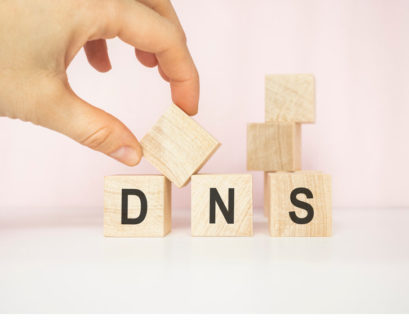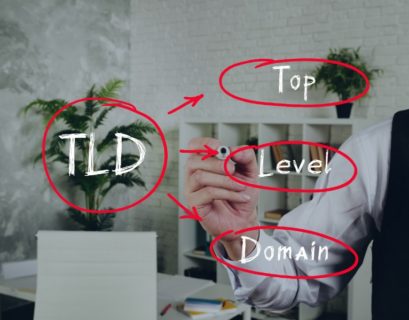TLDs for Domain Flipping play a crucial role in how easily a domain can be resold and at what price. When someone shops for digital real estate, the top-level domain ending, such as .com, .net, .io, or .ai, directly affects their trust, expectations, and perception of value. Choosing the right TLD makes a direct impact on your domain flipping success, especially now that the global domain market continues expanding rapidly.
According to the DNIB Q3 2025 report, total domain registrations across all TLDs reached 378.5 million at the end of the quarter, reflecting a 4.5% year-over-year increase. This rise shows that interest in digital assets is strong, which creates more opportunities, as well as more competition for domain flippers.
Table of Contents
Why the TLD Matters in Domain Flipping
The TLD influences a buyer’s first impression. A strong name on a mismatched extension can be difficult to sell, while a good name on a trusted TLD often attracts more interest. Buyers instinctively gravitate toward familiar and authoritative extensions because they signal reliability.
For instance, .com and .net reached 171.9 million registrations by the end of Q3 2025 (Source: DNIB, Q3 2025). Their combined renewal rate of around 75.3% reflects long-term trust among users. When an extension maintains such a high renewal percentage, buyers see it as a safe investment.
The TLD also determines the types of buyers you can target. Tech startups, for example, tend to prefer .io or .ai, e-commerce brands may choose .store or .shop, and local businesses often rely on their country’s ccTLD, such as .de or .co.uk, because they communicate local presence. Understanding these behavioral patterns helps you predict who will buy your domain later and how much they might pay.
Market Trends That Influence TLD Value
The domain industry behaves similarly to the real estate market: trends shift, and so do buyer preferences. The DNIB Q3 2025 report shows that new generic TLDs (ngTLDs) now reach 42.9 million registrations, marking an 8.5% quarter-to-quarter increase and a 21% year-over-year growth. This growth suggests increasing adoption of new extensions for branding, creativity, and niche industries.
It is especially relevant for domain flippers because growing adoption increases liquidity. Buyers feel more comfortable considering non-.com domains when they see real-world usage. Extensions such as .app, .xyz, .blog, .tech, and .shop have gained traction and appear more frequently in professional branding. This makes them more likely to flip than they were a few years ago.
The aftermarket also continues expanding. According to NamePros’ analysis of NameBio-reported sales data, the secondary domain market has been growing steadily, passing US$185 million in recorded resale value in the previous year and continuing upward in 2025. The majority of premium sales still involve .com domains, but the rise in new TLD sales shows that buyers are open to alternatives when the domain name itself is strong.
Experience Industry-Leading DNS Speed with ClouDNS!
Ready for ultra-fast DNS service? Click to register and see the difference!
How to Evaluate TLDs for Domain Flipping
When choosing TLDs for domain flipping, analyze them as you would any investment. To make the process easier, here are the key factors you should consider:
- Recognition and trust
People instinctively trust familiar extensions like .com and .net, which have 171.9 million registrations combined. Especially .com leads the market by a huge margin and continues to grow every quarter. A domain ending in .com is often easier to flip simply because it feels established. That doesn’t mean other TLDs are bad, it means you must evaluate how buyers perceive them.
- Target audience
Every TLD has an audience. If you plan to flip a tech-related domain, .io or .ai may be excellent options. If you’re targeting online retailers, .store or .shop might appeal to them. For a blog or content site, .blog or .info could work. Consider who might buy the domain before choosing its extension.
- Registration trend of the TLD
TLDs experiencing growth year over year, like many new gTLDs did in Q3 2025, are more attractive for flippers. The growth suggests a healthier resale ecosystem. In such a situation, momentum matters. Many buyers follow what others adopt.
- Renewal rate
Renewal rate is an underrated but powerful indicator. High renewal rates reflect user satisfaction. When users renew a TLD at high levels, like the ~75% rate for .com and .net, it means they find long-term value in that extension (Source: DNIB, Q3 2025). TLDs with low renewal rates may signal lower trust and weaker resale potential.
- Cost structure
Some newer TLDs have low first-year registration costs but very high renewals. When holding domains for months or years, renewal costs matter. Flippers should calculate profitability beyond the first year.
- History and compliance
Always inspect whether the TLD has a reputation for spam or abuse. High-abuse extensions can scare off potential buyers regardless of how good the domain name is. Also, pay attention to TLD-specific restrictions, especially for country-code domains.
Most Promising TLDs for Domain Flippers
While every flip is unique, certain TLDs consistently perform better due to demand, branding potential, and liquidity.
.com
Still the gold standard and the most reliable choice. Buyers actively search for .com domains, and the market data backs this up with stable growth and strong renewal performance.
.net
Domains with .net extension are not as powerful as .com, but still widely recognized and trusted. It is often easier to secure good names here than on .com, though resale values are typically lower.
.io
It is a popular choice among tech circles, SaaS companies, and developer-focused startups. Its popularity continues to climb, and many high-value aftermarket sales include .io names.
.ai
Driven by explosive development in the AI sector, .ai has become one of the most valuable non-.com extensions. The growth of artificial intelligence companies in the last three years has pushed this TLD into mainstream startup branding.
.xyz
This new gTLD has seen significant adoption by Web3, blockchain, and tech developers. Large brands and crypto projects using .xyz improved its credibility.
.app
Backed by Google and used widely in mobile development, .app is gaining market stability and sells well when matched with strong brandable names.
Local ccTLDs
Domains like .de, .co.uk, .nl, .fr and .ca are excellent when targeting region-specific businesses. They perform especially well when paired with strong keywords relevant to a country or city.
Practical Steps for Using TLDs Strategically in Domain Flipping
Start with a clear buyer persona. If you want to flip to startups, choose extensions favored by startups. If you target local businesses, focus on ccTLDs. This keeps you from buying random, unsellable domains.
Next, evaluate name-quality first, TLD second. A great name on a good extension often outperforms a mediocre name on a great extension. Once you find a strong name, compare the benefits of its available TLDs. If the .com is taken but the .io or .ai is available, consider whether the domain fits that niche market.
After securing the domain, increase its perceived value by presenting it professionally. A clean landing page, simple logo, or short description can improve buyer confidence. Then list the domain across multiple marketplaces to maximize exposure.
Finally, track market changes. The TLD landscape moves quickly. A TLD unpopular today may grow tremendously next year, just like .ai did during the AI boom. Staying updated helps you catch opportunities before the crowd arrives.
Conclusion
TLDs for Domain Flipping are an essential part of valuing domain names and predicting resale potential. With the domain ecosystem growing to 378.5 million registrations globally, competition is intense, but so are opportunities for smart investors.
By understanding buyer behavior, examining TLD trends, and choosing extensions that align with market demand, you dramatically increase your chances of flipping domains quickly and profitably.





